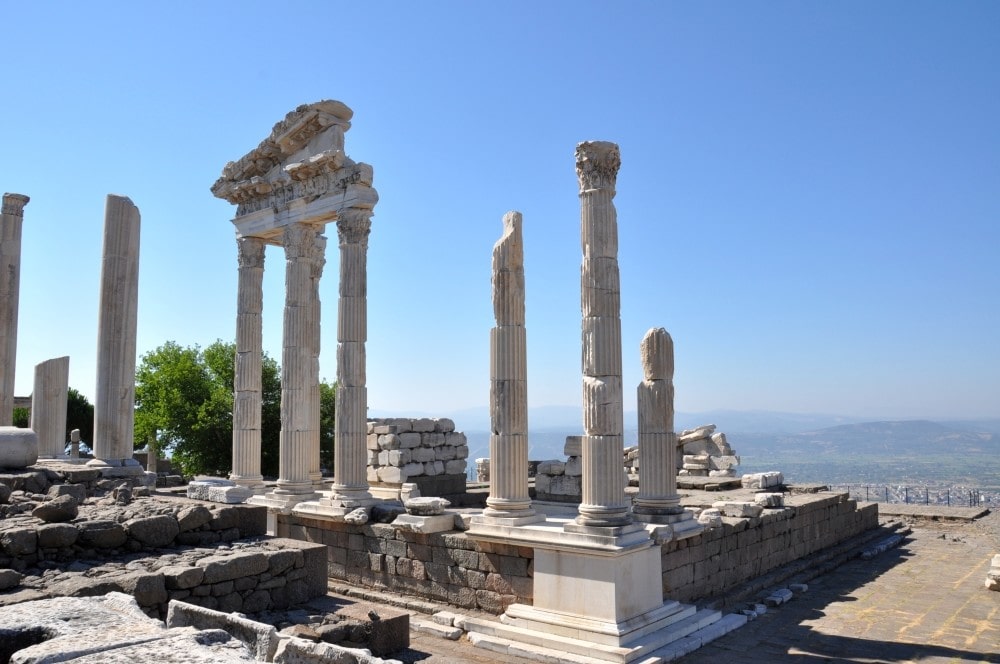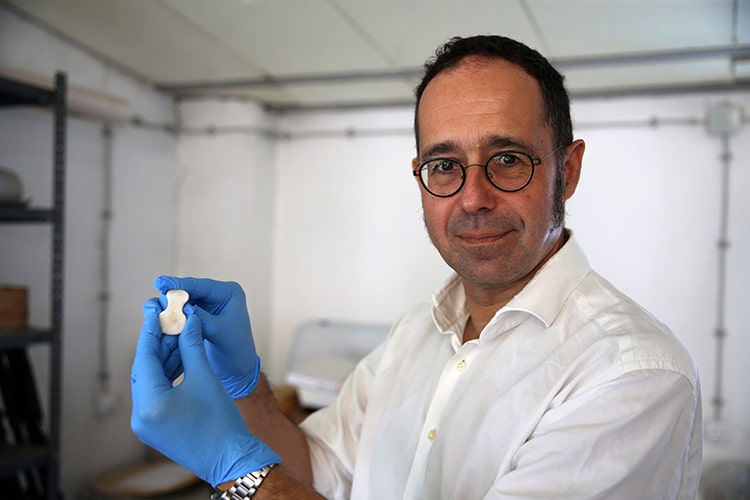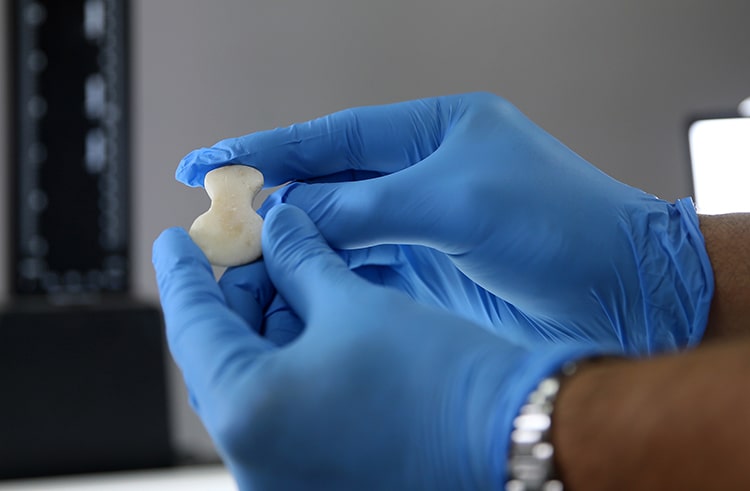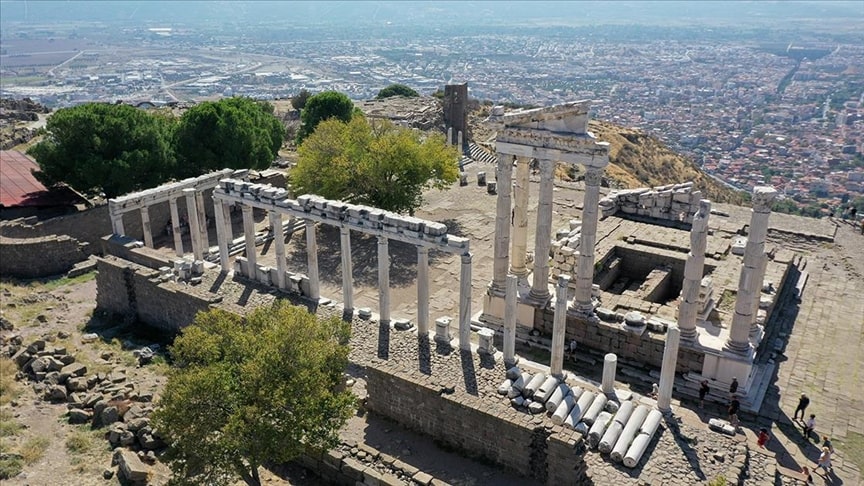During a surface survey in the Bakırçay plain near the ancient city of Pergamon, archaeologists uncovered a goddess figurine dating back 4500 years.
Pergamon, situated in the present-day district of Bergama in İzmir, is regarded as one of the most significant centers of the ancient world. It served as the capital of the Kingdom of Pergamon, which was founded in the 3rd century BC.

Pergamon is distinguished by its construction on a steep hillside. One of its most impressive edifices is the Temple of Trajan, which honors the Roman Emperor Trajan.
Recognized as a Multilayered Cultural Landscape on the UNESCO World Heritage List, Pergamon boasts important historical landmarks, including the Asklepion, known for being one of the earliest sites for psychotherapy, and the Red Basilica, which is among the seven churches referenced in the Bible.

During a surface survey carried out by a team from the German Archaeological Institute alongside Turkish specialists, a 4.5-centimeter tall marble goddess figurine was uncovered, dating back to the Bronze Age and thought to be part of a prehistoric belief system.
Prof. Felix Pirson, the excavation director and head of the German Archaeological Institute, remarked, “The marble idol (goddess figurine) we discovered in a mound, measuring approximately 4.5 centimeters, is the most significant find of this year. It is estimated to be around 4500 years old. The small marble figure depicts a human form. While it lacks intricate details, it has a modern art-like quality. We believe this idol is associated with a Bronze Age cult and may represent a goddess or the region’s founder. Although we cannot confirm this, it is clear that it held great significance for the people of that era. The idol bears similarities to those found in Troy, making this initial discovery particularly important as it highlights the advanced culture present in this region.”

“Overall, our knowledge of the prehistoric era in Western Anatolia is quite limited. While we are familiar with Troy, we had scant information regarding the entire Bakırçay plain. This discovery is therefore highly significant for the region. The presence of this idol indicates that this area is not merely a struggling agricultural zone, but rather a site of rich cultural heritage.”

Assoc. Prof. Güler Ateş, a faculty member of the Archaeology Department at Manisa Celal Bayar University and Deputy Head of the Pergamon Ancient City Excavation, remarked that the idol suggests it is part of a distinct belief system in Bergama and its surrounding areas.
Ateş pointed out that a similar figurine has been discovered in Troy, stating, “This is one of the characteristic idols found in Western Anatolia. Its importance for us stems from the fact that no such idol has been previously uncovered in Bergama and its vicinity. Thus, this find is highly significant.”
Cover Photo: Ahmet Bayram/AA

